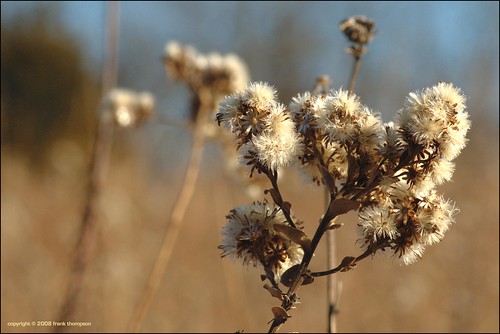
"Praise and Thanksgiving" is an old hymn, sung to the tune of "Morning Has Broken" by Cat Stevens:
Praise and thanksgiving, Father we offer, for all things living, created and good:
Harvest of sown fields,
Fruits of the orchard,
Hay from the mown fields,
Blossom and wood.
Text: Albert F. Bayly b. 1901
Tune: Gaelic
I sat in church debating how to spend a beautiful October afternoon. There were student papers to grade, and a chicken that was nearing its expiration date that needed to be cooked. Yet, there was also the Wildflower Reserve at
Raccoon Creek State Park. I let the hymn tip the scale.
I wanted to rest my eyes on something far away--not a computer screen, or the page of a book, or my apartment walls.
Driving and dragging my mental feet, I kept thinking of all the reasons that I should not take the time to look at wildflowers. About a third of the way there, I took a deep breath, a sigh really. I don't know where it came from, but from then on things got better.
Along Route 30,
Janoski's Farm Market was busy with families bent on picking their own pumpkins. On down the road, familiar turns and hills led up to the wooden sign telling where to turn in for the Wildflower Reserve.
It was pretty quiet. Once in a while an airplane flew high overhead, reminding me that the airport is not far away. But then the peace settled in again and I was alone with the stalks of dried flowers swaying in the breeze.
October is an odd time to visit the Wildflower trails. The Queen Anne's Lace was turning beige and crinkling around the edges. A reed bent down, looking the way I feel sometimes. The underbrush provided some yellow leaves, traces of green not entirely gone for good. It is a quiet time of year: not summer anymore, not winter yet.
There is a sense of just being, for the time being. Autumn is enough, and it's beautiful.
I walked around and around the same trail, the one I knew, not wanting to get isolated on an unfamiliar path. A few people came, grandparents with two small children. I followed them a while. Maybe next time, I'll take a new trail.
A few hundred feet down the road is the entrance to Raccoon Creek State Park. I drove through the park under a canopy of gold.
Take the time.
View Larger Map
 Willa Cather wrote:
Willa Cather wrote:








